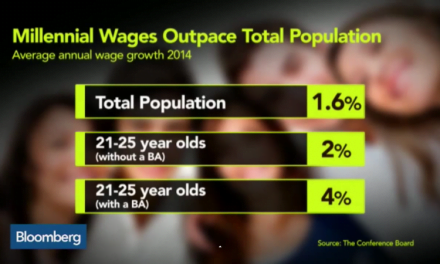This article comments on the unfounded conspiracy theory held by inflation pessimists that the Federal Reserve’s increased lending will invariably trigger massive future inflation.
To provide a crutch for the ailing banks that overextended themselves during the Millennium Housing Boom by making too many high-risk real estate loans, the Federal Reserve (the Fed) infused massive amounts of new money into the banking system. After supplying banks with cash starting in October 2008 after the near collapse of the lending industry, the Fed made additional (new) funds available to banks (as borrowers) for all types of lending, such as homeowner purchase-assist loans and commercial refinancing.
The result was a deliberate, and so far successful, stabilization of the banking industry. It did not and cannot make insolvent banks suddenly solvent. Bad paper is still bad paper. However, as has historically been the case whenever the Fed pumps large amounts of money into the economy, inflation pessimists emerge. These economic charlatans often and loudly proclaim (with no historical or justifiable proof) that the Fed’s healing actions will tangentially cause alarmingly high inflation.
We deliberately are given 2% to 3% annual inflation as a “hedge” against deflation since deflation is virulent and far more difficult to root out than inflation. Thus, these inflation pessimists say, the pumping of new money will eventually prove economically damaging, a debunked economic platform constantly energized by mid-American “fresh water” economists. “Government interference is the problem, not the solution,” roars the chorus of Reganomics. Few Californians are fooled.
As discussed in a recent speech titled “On the Economic Outlook and the Commitment to Price Stability” delivered by Dennis P. Lockhart, President and Chief Executive Officer of the Federal Reserve Bank of Atlanta, the inflation pessimists’ battle cry is without merit or substance. We at first tuesday can only hope the12th District Federal Reserve President would be as gutsy.
The argument heralded by inflation pessimists is of limited depth and ignores many fundamental changes to the Fed’s monetary policy. They believe the growth of the federal deficit, in tandem with the calculated growth of the Fed’s balance sheet as it funnels money to ailing banks, invariably sets the stage for future inflationary trends of leviathan proportions – equal in size to the pump priming that has been carried out. Under inflation pessimists’ reasoning, as people begin to borrow and spend yet again, banks will withdraw their substantial cash reserves on deposit with the Fed to make an increased volume of loans in tandem with the increase in consumer confidence. As a result, too much money will be available to chase too few goods and services which will drive up prices – hence, inflation.
Thus, the pessimists superficially conclude that the necessary growth in the money supply (the very same supply which kept the largest banks from sinking irretrievably into insolvency) has no other course of action but to cause inflation. And even more horrific, they predict the inflationary movement will start very soon and stamp out the economy that has only just begun to recover.
However, this foregone conclusion is ignorant of protective actions already taken by the Fed to avoid the exact inflationary doomsday scenario feared by the pessimists. Since October 2008, the very moment when the Fed began funneling cheap money to banks, the Fed has been paying interest on the funds held by the banks as reserves on deposit with the Fed, an unprecedented action which was not previously the Fed’s policy. As a result, banks are less inclined to loan out their interest-bearing reserves or actively seek ways to invest their easy capital; instead, they have more impetus to wait patiently, holding onto those massive golden reserves, collecting interest and appearing solvent in the process.
Thus, the size of the Fed’s balance sheet (the product of lending), though necessarily very large, does not mean future inflation is inevitable. There will be no flood of cash available to consumers since it is not in the best interest of banks to open the floodgates as permitted by their reserves, as is the presumption of the inflation pessimists.
Contrary to the pessimists’ fears, the Federal Open Market Committee (FOMC), a component of the Fed designated with overseeing the open market monetary operations of the nation, is fully conscious of the potential for inflation. Inflation fighting is the Fed’s primary job, together with job growth. The Fed has a control system for removing the funds systematically. The pessimists, it seems, are quick to forget a basic monetary principal: what the Fed puts in, the Fed always gets back, both at a time of its choosing.
The FOMC expects the size of the Fed’s balance sheet (money lent) will peak towards the end of 2009. After it has reached its apex, it will decrease as their long-term lending programs are completed, intentionally phased out, or not needed as banks regain their independent stability. When inflation begins to reappear, the FOMC has long-standing mechanisms that will reduce the Fed’s balance sheet (money lent) in a controlled, regulated way which will not hinder the natural growth of the economy. They conduct in-and-out adventures on their balance sheet every commercial (Christmas) season, and also did so going into 2000 to alleviate the millennium panic’s demand for cash from individuals.
Unfortunately, the inflation pessimists’ concerns are as vociferous are they are unsubstantiated – a dangerous combination. As surmised by Lockhart, inflation fears can quickly become inflation expectations, a self-fulfilling prophesy of the most nefarious kind. Deflationary expectations, held by businesses and consumers alike going into 2009, is a bane to economic recovery since deflation is tough to eradicate. Deflation is perhaps the greatest menace threatening the Fed’s ability to act unhindered in efforts to stabilize the economy, in good times and in bad. Currently, the chances of inflation are no more likely than the chances of deflation, as real estate service providers (read: brokers and their agents) will come to realize over the next three or four years.
The Fed is the sole entity entrusted with pulling back the funds they injected into the banking system. To maintain a reasonable long-term expectation of inflation among holders of dollars and dollar-denominated assets (read: real estate), the Fed must absorb the funds before prices of consumer goods rise more than 2 or 3% annually (it’s currently just below 2%).
Looking towards the future, the Fed must learn from its mistake of keeping interest rates low for too long, as it did during the 1990s and again during the Millennium Boom, and reexamine its dismissive attitude toward leaning against recurring asset inflation. When a future similar stage for financial instability is set as the stock market and real estate prices begin their next seemingly inevitable (speculative) ascent, the Fed, unlike its past behavior, must act quickly to preempt yet another boom and bust cycle. [See our Preventing the next real estate bubble article from the October 2009 journal.]
More precisely, when prices on both types of investment assets rise more than 4-5% per annum — starting with stocks then moving to real estate — the Fed must increase short-term rates, and possibly sell long-term bonds discounted at high rates of interest. Thus, it must suck up money to make the dollar more dear and scarce, all in an effort to install a controlling damper on unsustainable asset inflation and rid us of the violence of booms. This the Fed can do as part of its inflation fighting and job stabilization authority. The Fed coordinates this task in concert with the administration, which then cuts down government spending, and Congress, which can increase taxes. It has all been done before.
The Fed should also use its influence to push regulatory agencies and Congress, as it did under Greenspan, to regulate the risks a mortgage lender can reasonably take (down payment amounts, terms of the loan, type of appraisal – cost, income, and comparable approaches, repayment schedules, variable teaser rates, etc.). And while these regulatory measures will likely be met with resistance and scorn in the future by the same preachers of an inflation doomsday that never came and at a time when money is being made by all, it is the responsibility of the Fed to be forward-looking (and realistically pessimistic if need be) even in the face of those optimistic boom years.
It is excess money that intoxicates behavior more than any pharmaceutical or alcohol, and it’s a difficult and unpopular call to pull the money back and shut a party down just as it gets going, not wait until it has gone wild – but that’s the purpose and nearly 100-year history of the Fed.















2005: 2% inflation (during the real estate bubble?) Now, you weigh in that deflation is directly correlated with the losses accumulated in home values?! I couldn’t agree more. I was in a heated argument back in 06′ about how the continuous rise in real estate value was understated in the Government Inflationary Stastistics.
My arguments were that gas prices were up 80% from 2000, Home values were up at least 50% and even the price of my Right Guard went from 3.99 to 4.99! That is not a 2% average year over year! Why would anyone trust what the government states?!
The overall point being; If you understand Finance and Economics, then prepare yourself for a storm worse than what you saw last year. The good times are over…….and, they are not returning. Even the short-run looks horrific. Why?
These factors are going to hit relativley too close to each other:
The market has been propped by Bailouts. The government is robbing Peter to pay an unethical Paul in order to salvage the system. It’s like giving crack to a crack-head and expecting a good result! Economics 201 will teach you…..bailouts don’t work!
Oil: helped send us into a tailspin……crashed, and helped earnings…….and now has spiked again only this time……lending is extraordinarily tight, no equity and unemployment is closer to 10% not 8%.
Commercial real-estate. Imagine, another real-estate bubble where properties are worth triple what the average consumers’ property was when that market tanked!
Aging Baby-Boomers. Think they aren’t going to get out of the market when the inflationary rebound occurs? Just sit and wait. And if that isn’t creepy enough……wait until they cash out their life insurance policies or just die! 65 million people with policy averages of probably what is close to 100k each……you do the math!
The Bond Market bubble! God forbid we don’t have a bubble! The latest and greatest craze guaranteed to crash (like all the others)!
And, those pesky derivatives! Don’t think the leverage won’t come back to haunt us. The Fed won’t be able to print money fast enough to cover this tab!
I wholeheartedly agree with Bill.
Mr. Wallmark, while he seems to be a well-intentioned, English major who is obviously a better writer than I am, however he is seriously misguided. He is evidently the product of a liberal education and apparently skews the facts with his liberal-colored lens. Although at first blush his rhetoric is an artful presentation, he lacks credibility and makes a blatantly biased case that unsuccessfully attempts to spin the truth. After reading his claims and conclusions, I question why he writes for First Tuesday as a supposed “expert” on economic matters.
Mt Wallmark could not be farther from the mark if he tried. In my view, under the guise of “Change for the Better” (sic), unfortunately the current administration’s policies (Federal and many States) are so misguided that it may an entire generation to undo the economic harm they will produce through their actions.
I pray that there are enough other well-informed voters that are aware of the nuances of our modern global economy, and who have enough life experience to see through this kind of unmitigated crap. The question is will enough of us will see the beyond the spin and take positive action at the earliest opportunity, before it is too late.
Step 1 is to think independently and question everything that writers write or producers produce while considering the evenhandedness of the information source. If they ignore accurately reporting both sides, do not subscribe or watch. Step 2 is to get educated by voraciously reading. Step 3 is to get involved in the political process and take measured and deliberate action. Steps 4 is to not vote into office and/or help unseat any official, regardless of party affiliation, in any branch of government who by their past or present actions reveal they have no clue about your best interests, business, the GDP, the US monetary system, or global economics. We especially need to target those who are guilty of rushing through unprecedented and damaging policies costing billions and trillions without prior sufficient consideration, understanding, and spirited public debate. HELLO? Is anyone sane still out there?
We need to take control and reverse our present “tax and spend” course in order to achieve lasting prosperity for all, whatever your economic level or political bent. The alternative is to stand by while a few elites that will be immune to the pain they impose continue to tear apart our toilet paper thin economy with a lead weight of debt on track to reach $9 Trillion. If enough of you believe Mr. Wallmark and his ilk, then I think that our future, our children’s future, and our grandchildren’s future, and what’s left of our beloved real estate industry at this juncture is indeed darker than Dante’s inferno.
So the “fear mongers” should just shut up so we can all continue to trust our benevolent friends at the Fed?
The “pessimists” are just out to scare people?
They are all a bunch of “Reaganomic” “alarmists” who enjoy fooling the public?
Yah, right. Brilliant analysis that only ignores about 90% of the issues.